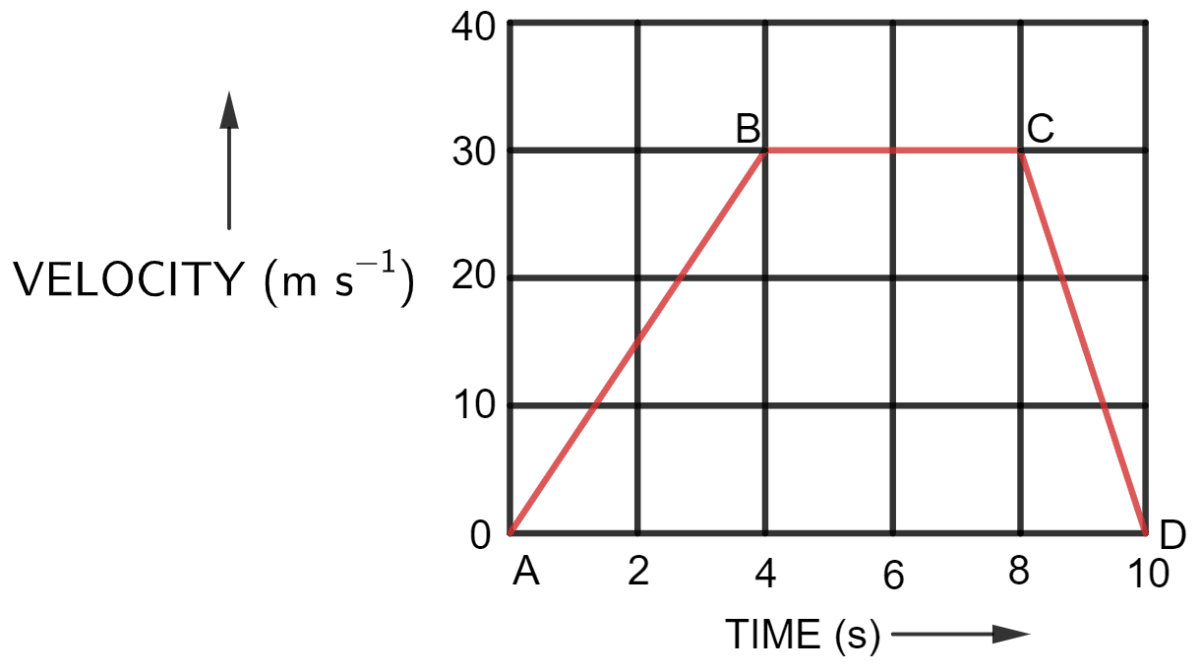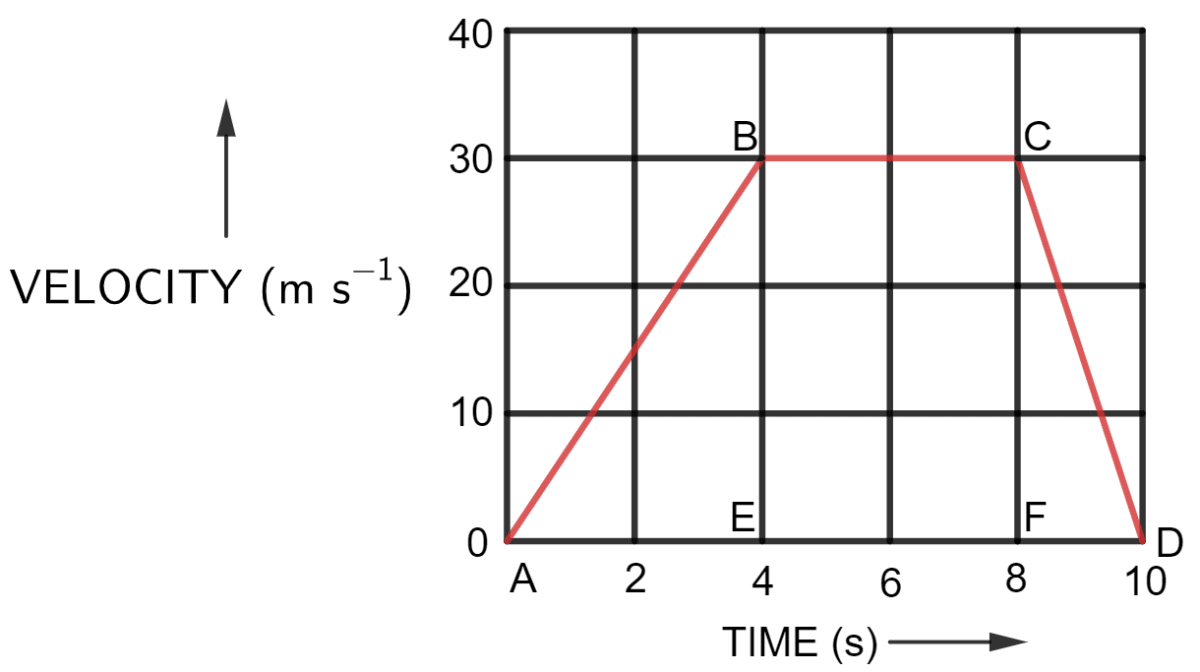Physics
The velocity-time graph of a moving body is given below in figure

Find —
(i) The acceleration in parts AB, BC and CD.
(ii) Displacement in each part AB, BC, CD, and
(iii) Total displacement.
Motion in One Dimension
38 Likes
Answer
Let E be the point at t = 4 and F be the point at t = 8 as labelled in the graph below:

(i) Acceleration in part AB = slope of AB
Hence, Acceleration in part AB = 7.5 m s-2
Acceleration in part BC = slope of BC
We observe from the graph that there is no change in velocity in part BC. Hence, Acceleration in part BC = 0 m s-1
Acceleration in part CD = slope of CD
Hence, Acceleration in part CD = -15 m s-2
(ii) Displacement in each part is as follows —
(a) Displacement of part AB = Area of triangle ABE
Substituting the values in the formula above, we get,
Hence,
Displacement of part AB = 60 m
(b) Displacement of part BC = Area of Square EBCF
Substituting the values in the formula above, we get,
Hence,
Displacement of part BC = 120 m
(c) Displacement of part CD = Area of triangle CDF
Substituting the values in the formula above, we get,
Hence,
Displacement of part CD = 30 m
(iii) Total displacement = Displacement of part AB + Displacement of part BC + Displacement of part CD
= 60 + 30 + 120 = 210
Hence,
total displacement = 210 m
Answered By
27 Likes
Related Questions
Figure shows the velocity-time graph for the motion of a body. Use it to find the displacement of the body at t = 1 s, 2 s, 3 s and 4 s, then draw the displacement-time graph for it on figure (b).

Figure below shows a velocity-time graph for a car starting from rest. The graph has three parts AB, BC and CD.

(i) State how is the distance travelled in any part determined from this graph.
(ii) Compare the distance travelled in part BC with the distance travelled in part AB.
(iii) Which part of graph shows motion with uniform (a) velocity (b) acceleration (c) retardation?
(iv) (a) Is the magnitude of acceleration higher or lower than that of retardation? Give a reason. (b) Compare the magnitude of acceleration and retardation.
A ball moves on a smooth floor in a straight line with a uniform velocity 10 m s-1 for 6 s. At t = 6 s, the ball hits a wall and comes back along the same line to the starting point with same speed. Draw the velocity-time graph and use it to find the total distance travelled by the ball and its displacement.
Figure shows the velocity-time graph of a particle moving in a straight line.

(i) State the nature of motion of particle.
(ii) Find the displacement of particle at t = 6 s.
(iii) Does the particle change its direction of motion?
(iv) Compare the distance travelled by the particle from 0 to 4 s and from 4 s to 6 s.
(v) Find the acceleration from 0 to 4 s and retardation from 4 s to 6 s.